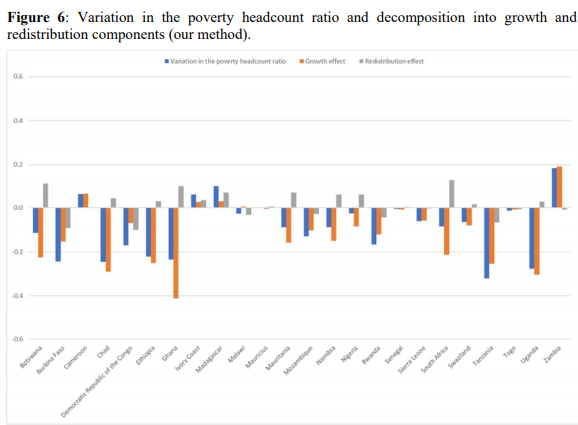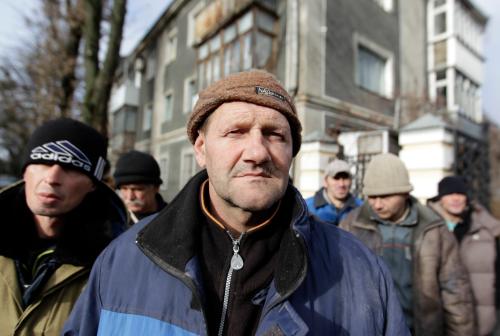In a new World Bank Policy Research Working Paper, The Devil Is in the Details: Growth, Polarization, and Poverty Reduction in Africa in the Past Two Decades, authors Clementi, Fabiani, and Molini examine why recent economic growth in African countries has been less pro-poor (poverty reducing) than in other non-African developing countries with similar levels of economic growth. According to authors, current explanations for lower growth-poverty elasticity in Africa that emphasize the role of inequality in undermining poverty reduction fail to solve this question completely, especially since Africa generally appears to have experienced a decline in inequality, as measured by the Gini index, in recent decades.
The paper focuses on income polarization in Africa by assessing patterns of distributional changes in household consumption using “the relative distribution” method and household survey data from 24 sub-Saharan African countries between the late 1990s and early 2010s. Income polarization, the authors argue, is a separate concept from income inequality in the sense that it measures the “clustering” of a population around two or more poles of the distribution, as well as the location of the poles along the distribution—as opposed the dispersion around the mean of the distribution, which income inequality measures. The authors additionally examine changes in poverty reduction over the period—using decompositions of poverty change that highlight two component parts: the growth component due to changes in median consumption, and the redistribution component due to shifts in the distribution of consumption—to determine the extent to which growth and the distributional changes influenced poverty reduction outcomes.
In terms of polarization, the authors find widespread polarization in household consumption in 19 out of 24 of the sub-Saharan African countries analyzed, characterized by a clustering of the poorest 30-40 percent of households around a local mean (or “pole”) while the divide between these households and the rest of the distribution increased. Notably, Ghana, Ethiopia, and South Africa experienced a clustering of households in the lowest decile, a similar, smaller clustering in the upper tail of the distribution, and a hollowing out of households in the middle of the distribution. Households in the lowest deciles of each country increased by 14 percentage points in Ethiopia, 20 percentage points in Ghana, and 15 percentage points in South Africa over the period. Sixteen other countries yielded similar results, whereas in Nigeria clustering in the upper and lower tails of the distribution were almost equal.
To understand how polarization is linked to changes in poverty, the authors computed the growth and redistribution effects on changes in poverty by analyzing gaps between median incomes and absolute income over time. The results (as seen in Figure 6) indicate that in 13 of the 19 countries in which polarization took place, these distributional changes undermined poverty reduction by 5-6 percentage points over the period.

In terms of policy recommendations, the authors argue that greater emphasis should be placed on implementing inclusive growth policies—for example, by diversifying economies into labor-intensive sectors—and addressing issues related to the main drivers of polarization, which they identify as “human capital, demography and basic infrastructures.”




Commentary
Figure of the week: Growth, income polarization, and poverty reduction in Africa
June 29, 2018